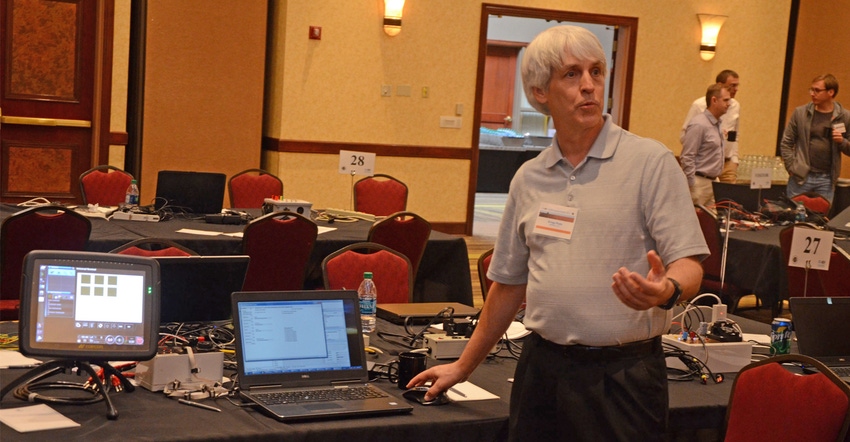
ISO 11783, or ISOBUS, has a young, but storied history in the ag world. Producers buying farm machinery needed a way for different implements and tractors to communicate in a universal way. Challenges arose when a producer bought a new tractor and borrowed an old implement from a neighbor, only to realize the two machines were incompatible — something in the communications stack had failed.
So, ISO 11783 — an international standard for communication between different implements — was created in the early 2000s and has seen a rapid growth since.
In 2008, the Agricultural Industry Electronics Foundation (AEF) formed with the goal of establishing guidelines for ISOBUS integration. In 2013, the foundation launched the AEF ISOBUS database, organizing and displaying ISOBUS compatibility and functionalities of different ISOBUS-certified implements, which can be accessed via the foundation's website at aef-online.org. In 2015, AEF launched the smartphone app version of the database, and the next step, says Andrew Olliver, product manager at CNH Industrial, is encouraging more manufacturers to get machines and implements ISOBUS-certified.
"At the moment there are about 24 manufacturers using the database with certified products," Olliver says. "Current membership of the AEF is over 200 companies. Not all of those 200 companies make an ISOBUS product sold to the end user, but at the same time, at least half of them do. Ideally, we need to grow from 24 companies with products in the database to 100 companies."
Producers, dealers benefit
The database was created as a way for dealers and producers to identify the compatibility of functions between different machines and implements. So, if a farmer is considering buying a new tractor, they can find it in the database, find its ISOBUS functionalities, and compare it with the tractor and implements they currently own to see if they are compatible.
Meanwhile, dealers can use the database to diagnose and solve ISOBUS incompatibilities. If two pieces of equipment aren't working together in the field, the dealer can connect a laptop to the ISOBUS and by running the ISOBUS check tool, create a diagnostic file, which can then be uploaded to the database to determine which functionalities aren't working and why. If the solution isn't apparent from uploading the diagnostic file, the dealer or technician can create a ticket in the ISOBUS database and attach the diagnostic file, and then the ticket is sent to the manufacturers involved to investigate.
Users can search the database by manufacturer, category and ISOBUS functionality to check the compatibility of functions of different tractor and implement combinations — including UT (universal terminal), AUX-N (auxiliary control new), AUX-O (auxiliary control old), TC-BAS (task controller basic), TC-SC (task controller–section control), TECU (tractor electronic control unit) and TC-GEO (task controller geo).
Certification means quality
Manufacturers can get implements certified through a conformance test administered at one of several testing facilities worldwide — including the Nebraska Tractor Test Lab at the University of Nebraska-Lincoln, which tests the whole ISOBUS system to ensure compatibility of various functions. Upon passing the conformance test, the manufacturer can market the implement with the AEF ISOBUS certification logo.
"It's really a quality indication of the ISOBUS system on the machines," says Ryan Milligan, business development manager at Powell Electronics. "That AEF certified logo signifies a level of quality and testing to conformance that it's going to create a plug-and-play situation for the grower."
And over time, AEF is continually adding new functionalities for certification, which can then be seen in the database. For example, the ISB, or ISOBUS shortcut button, was added to the ISOBUS database at the beginning of the year. This function allows the user to quickly deactivate implement functions that were activated by an ISOBUS terminal. The function being deactivated, or stopped, depends on the implement. For example, when multiple functions are running from a single terminal, the user can simply hit the "ISB" button to deactivate those functions, rather than having to navigate back to the correct screen on the ISOBUS terminal.
"As the years go by, we improve the things the conformance test can test," says Olliver. "Looking forward, this year there will be even more improvements to the conformance test coming out."
About the Author(s)
You May Also Like






